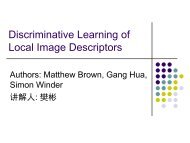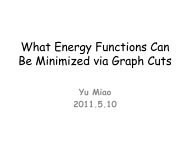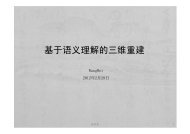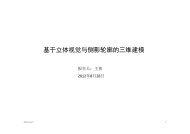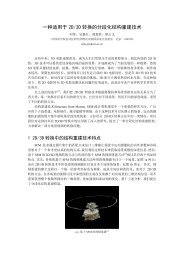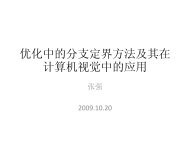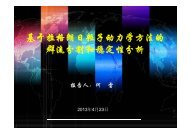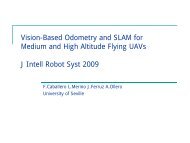Rotationally Invariant Descriptors using Intensity Order ... - IEEE Xplore
Rotationally Invariant Descriptors using Intensity Order ... - IEEE Xplore
Rotationally Invariant Descriptors using Intensity Order ... - IEEE Xplore
You also want an ePaper? Increase the reach of your titles
YUMPU automatically turns print PDFs into web optimized ePapers that Google loves.
This article has been accepted for publication in a future issue of this journal, but has not been fully edited. Content may change prior to final publication.<br />
<strong>IEEE</strong> TRANSACTION ON PATTERN ANALYSIS AND MACHINE INTELLIGENCE 27<br />
TABLE II<br />
RECOGNITION RESULTS ON THE THREE TESTED DATASETS WITH DIFFERENT LOCAL DESCRIPTORS<br />
53 Objects<br />
ZuBuD<br />
Kentucky<br />
Descriptor RIFT SIFT DAISY MRRID MROGH<br />
Accuracy 37.0% 52.2% 61.2% 57.4% 72.5%<br />
Descriptor RIFT SIFT DAISY MRRID MROGH<br />
Accuracy 66.8% 75.5% 83.1% 78.6% 88.1%<br />
Descriptor RIFT SIFT DAISY MRRID MROGH<br />
Accuracy 34.0% 48.2% 58.3% 57.5% 74.0%<br />
VI. CONCLUSION<br />
This paper presents a novel method for constructing interest region descriptors. The key idea is<br />
to pool rotation invariant local features based on intensity orders. It has the following important<br />
properties:<br />
a. Unlike the undertaking in many popular descriptors where an estimated orientation is as-<br />
signed to the descriptor for obtaining rotation invariance, our proposed descriptors are inherently<br />
rotation invariant thanks to a rotation invariant way of local feature computation and an adaptive<br />
feature pooling scheme.<br />
b. The proposed pooling scheme partitions the sample points into several groups based on<br />
their intensity orders, rather than their geometric locations. Pooling by intensity orders makes<br />
our two descriptors rotation invariant without resorting to the conventional practice of orientation<br />
estimation, which is an error-prone process according to our experimental analysis. In addition,<br />
the intensity order pooling scheme can encode ordinal information into descriptor.<br />
c. Multiple support regions are used to further improve discriminative ability.<br />
By pooling two different kinds of local features (gradient-based and intensity-based) based on<br />
intensity orders, this paper obtained two descriptors: MROGH and MRRID. The former combines<br />
information of intensity orders and gradient, while the latter is completely based on intensity<br />
orders which makes it particularly suitable to large illumination changes. Extensive experiments<br />
show that both MROGH and MRRID could achieve better performance than state-of-the-art<br />
descriptors.<br />
November 26, 2011 DRAFT



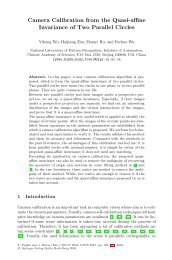
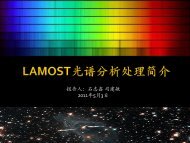
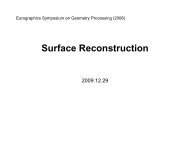
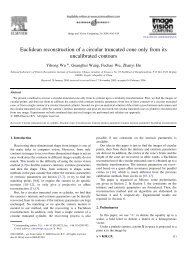
![Accurate, Dense, and Robust Multi-View Stereopsis (PMVS) [1,2,3]](https://img.yumpu.com/19388840/1/190x135/accurate-dense-and-robust-multi-view-stereopsis-pmvs-123.jpg?quality=85)
